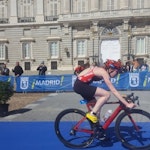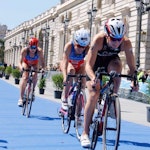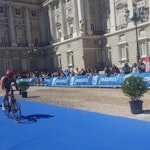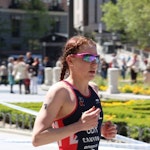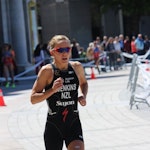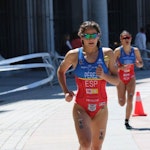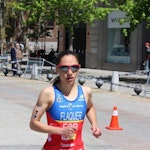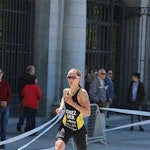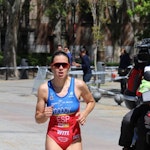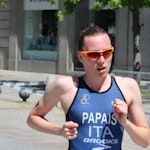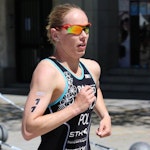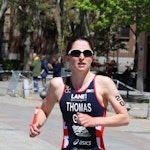Fit for a King (and Queen) - Madrid stuns the crowds and delights the athletes.
The new course. A tough and challenging bike that would change this classic event. Is that where the race could be won?
For the women we pretty much expected Lucy Hall and Jess Learmonth to dominate the swim, show their power on the bike and then to battle for Gold and Silver. Sadly, on the eve of the race Learmonth had to withdraw from the start list as she was unwell.
So, Lucy Hall, no pressure. It’s all down to you.

From the heartbeat-filled swim start, that silence immediately after the heartbeats, when the athletes are standing so tense just waiting for the off, from the moment they hit the water it was Hall who was commanding the race.
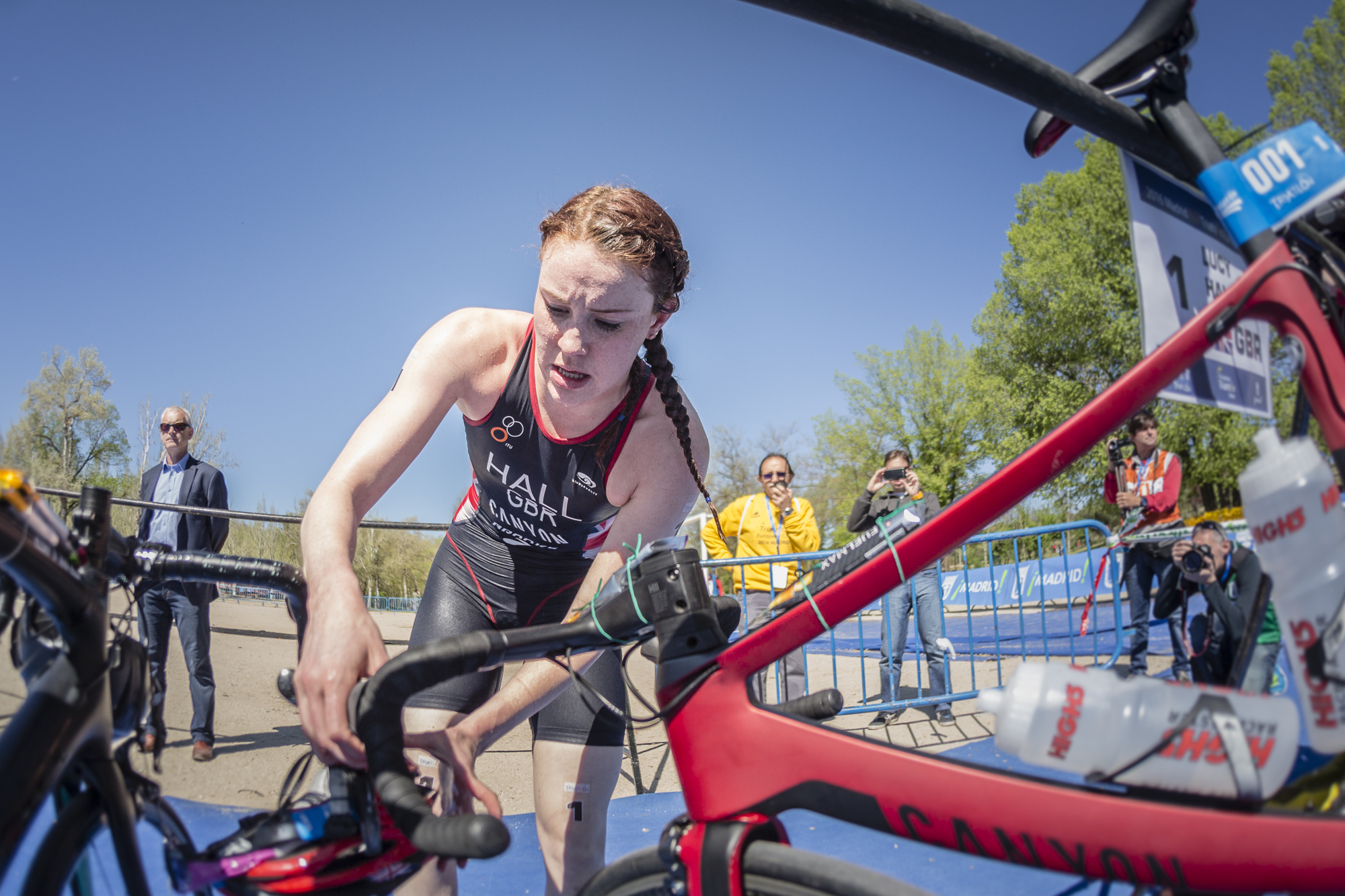
She exited the water 11 seconds clear of a Spanish athlete, Sara Pérez Sala who was later DSQ’d for failing to serve her penalty on the run. Basically, any penalties picked up by the Elite in T1, on the bike, in T2 and for the run have to be served in a Penalty Box out on the run course. If they do not serve these penalties then they are disqualified.
Behind Hall the nearest threat was Spanish athlete Anna Godoy Contreras. She was21 seconds away. Anneke Jenkins, the Spain-based Kiwi, was a full minute behind. Without Learmonth, would Hall go it alone or wait for back-up?
Out onto the bike course and the new design meant that the athletes had a 3k ride to the circuits. This was a hilly and technical route that could easily conceal a powerful athlete’s escape and that it exactly what she did.
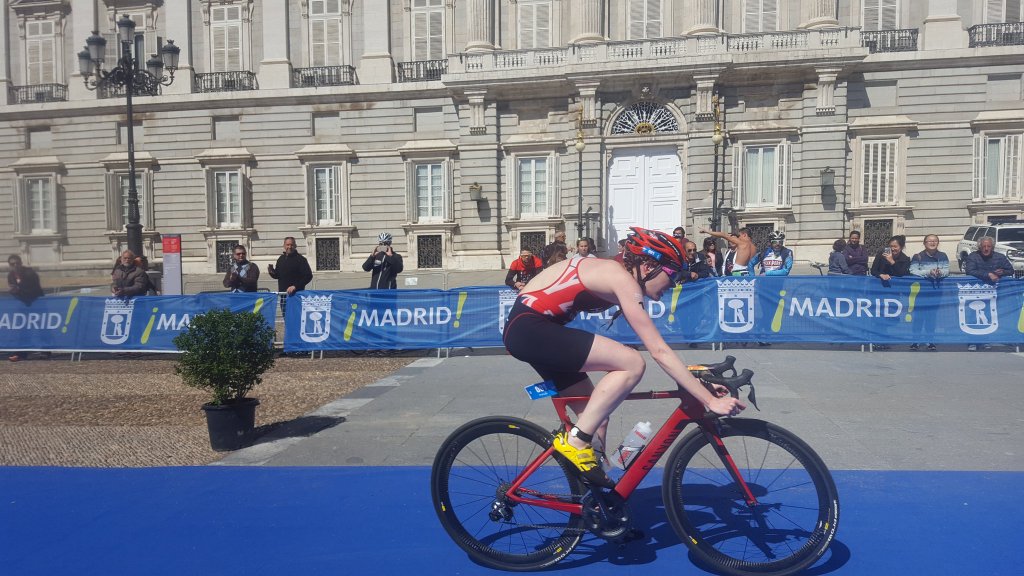
Hall was alone. Hall was away. Hall rode the entire 40k bike on her own and maintained her lead, growing her lead. The only person who was riding anywhere near as strongly as the British athlete was Italy’s Sara Papais. She was riding well and would be hoping to improve her 8th from Quarteira.
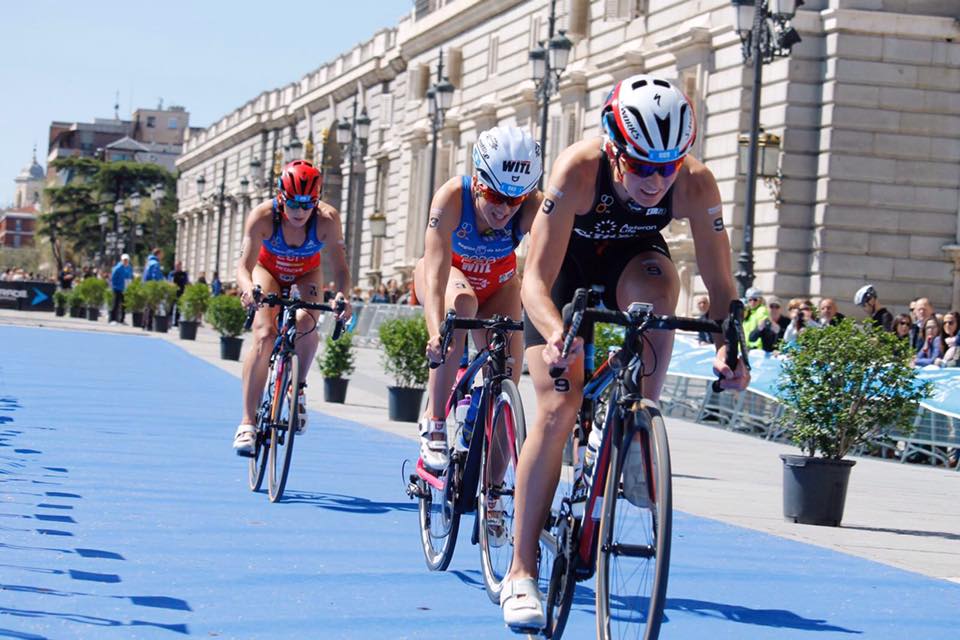
It was Jenkins leading the chase.
Hall entered a very empty T2. She took her time to change into the running shoes and then, alone, set off for the 10k.
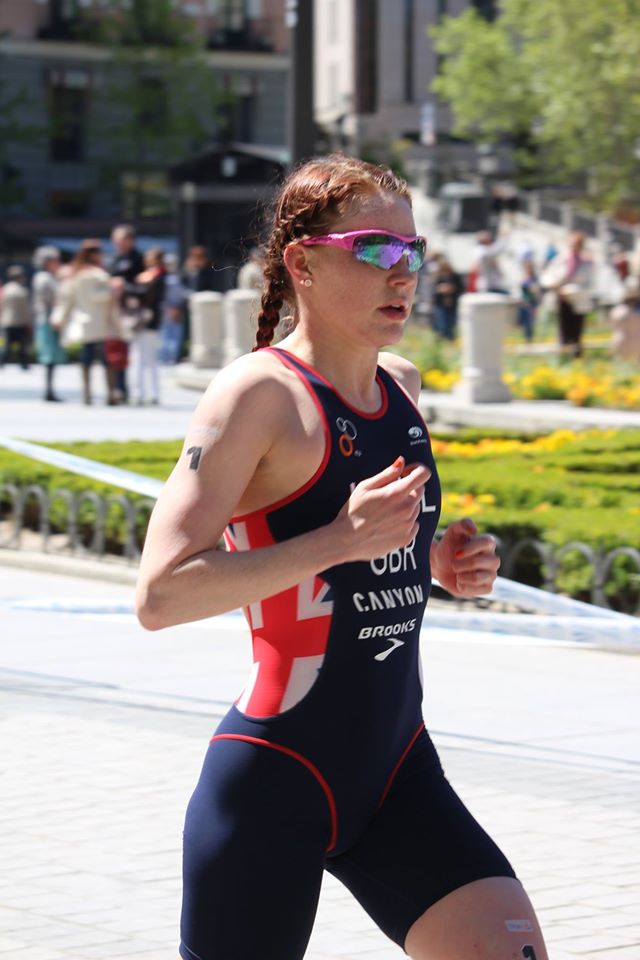
She left the crowds behind. They waited and they waited and 1:22 later the chasing group came into sight. Would there be anyone who could catch her?
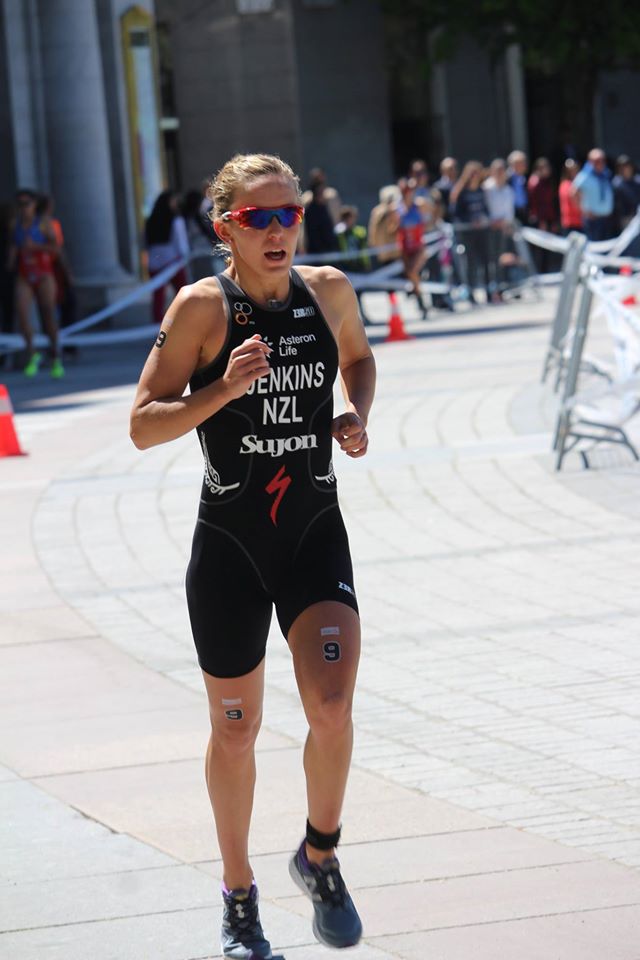
It was looking like a possibility for Jenkins and for the German athlete whose timing chip fell off and who was riding well and running faster than anyone else.
Marlene Gomez-Islinger won the Melilla event in 2015 with the second fastest run of the day and had placed well in the bike.

Pérez was running well, but with Jenkins looking stronger.
Hall kept her lead. Further back Gomez-Islinger and Papais were amongst those fighting for the remaining two places on the podium.

Poland’s Paulina Kotfica despite missing out some places on the swim, was showing well on the bike and a potential threat to the Mexican-born Michelle Flipo FRA. It was Flipo who had the stronger run and she became a threat for Gomez-Islinger.
As the run unfolded Gomez-Islinger proved to be the stronger of the two but ahead of her were still more athletes before she could get any chance of a place on the podium. For some, the pace was simply too much.
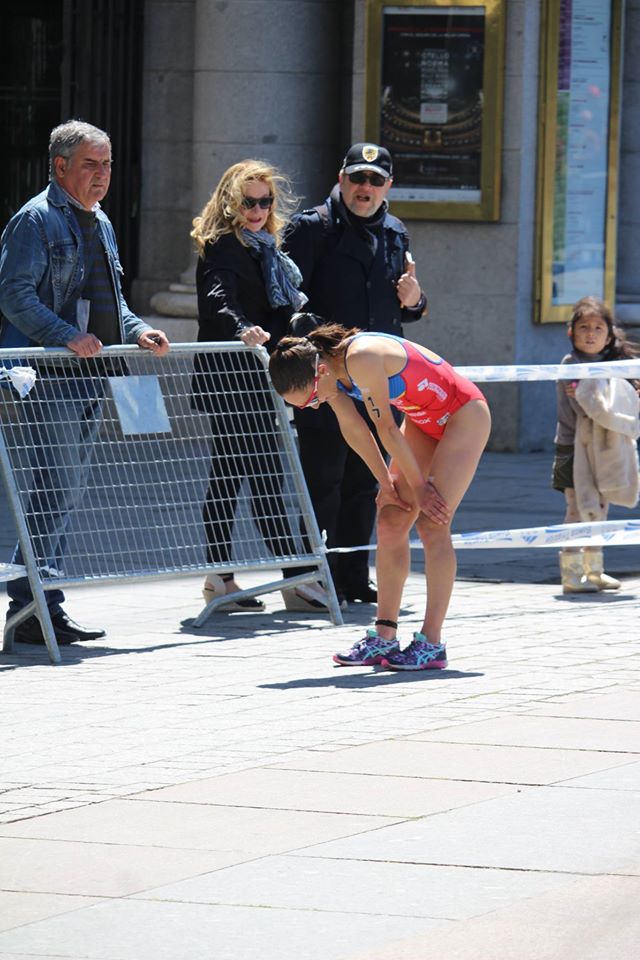
Jenkins kicked. Godoy had Papais running alongside her as they approached the bell for the fourth and final lap but as they turned to run once again along the blue carpet of transition, it was Papais who kicked and dropped Godoy. Behind her Gomez-Islinger and Flipo were having their own battle but with the German looking more relaxed and striding better.
Jenkins, shaking off her two-year exile into the world of injuries was having a great run and was looking strong, relaxed and in command. Papais looked light on her feet and Godoy, despite the loud cheers from the crowds just could not find that extra gear when it so mattered. Gomez-Islinger, pulling away from Flipo, looked like she might just make it to the podium but there were still over 2k to go. Click here to see her finish—> The run down the carpet looked good.
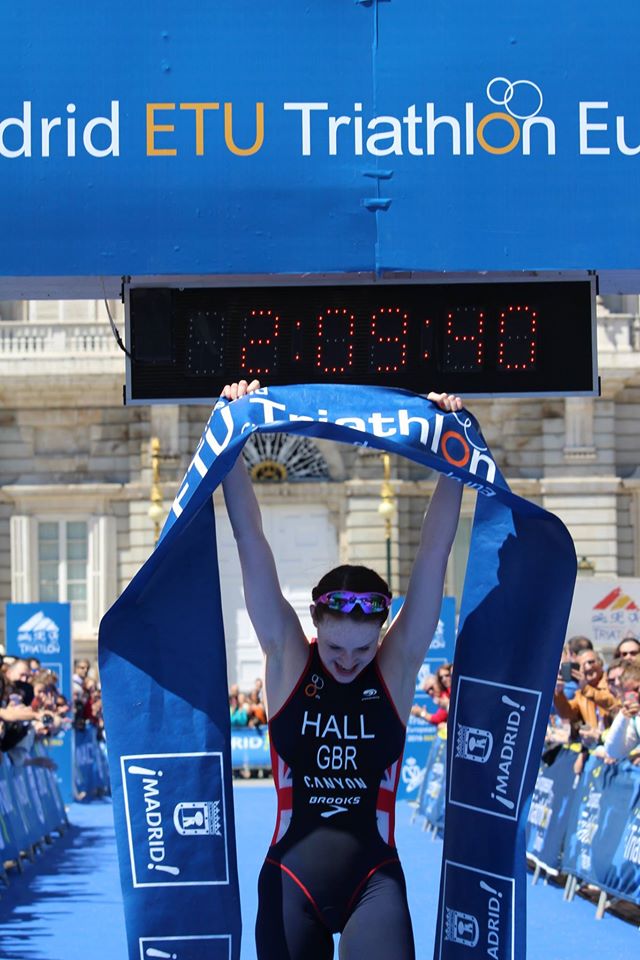
It was Hall who so easily took the top prize, her sunglasses raised onto her head she smiled with delight as she hoisted the finish tape.
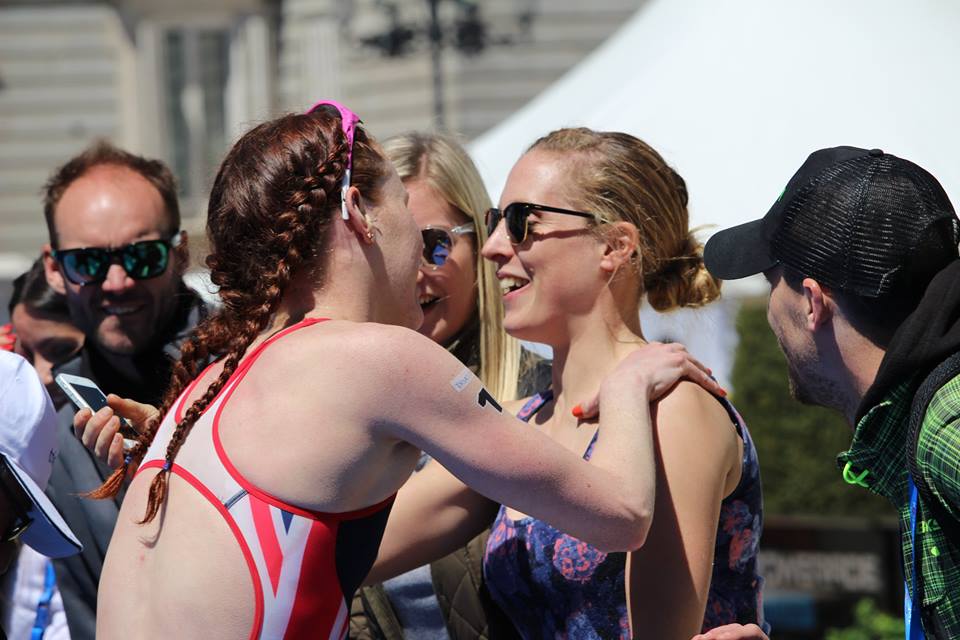
Jess Learmonth, side-lined through illness, was there to shout congratulations to her.
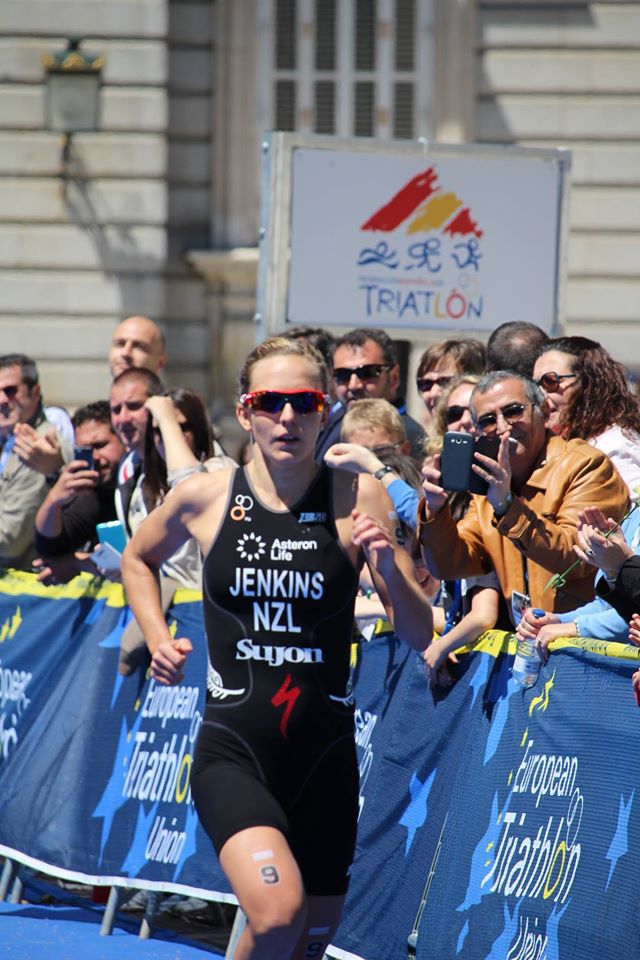
Jenkins who had the determination, pace and mental support of no less than Javier Gomes, is back in form and was able to add her second Madrid silver.
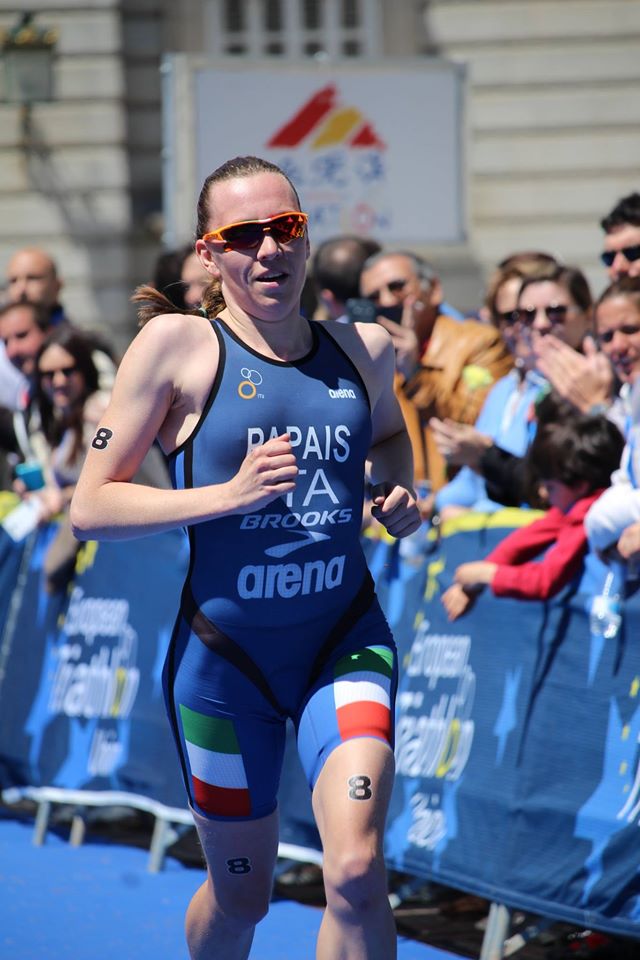
Bronze went to Papais who seemed to be getting closer and closer with every stride.
Of the 33 starters only 16 completed the course. Some were lapped, one we know was DSQ’d but they rest faced the stark realisation that this course is a tough one indeed.

After the race Hall said, “Every race is different. There are so many variables that can change a race. I love racing in Spain. The people here are really nice and racing here, in this iconic city, I really love it.” The race commentator crowned her “Queen of Madrid”. Can’t argue with that.
For Jenkins, the first accolade came from none other than the World’s best, Javier Gomez. “Javi Gomez Noya @Jgomeznoya Great job @annekejenkins 2nd in Madrid today. Amazing result after everything you went through! #proudofyou” When confronted with the microphone, Jenkins said, “Hola Madrid !! Having been injured since Madrid (2014) I tried to work hard on the swim. It wasn’t so good but I worked well on the bike. I could see Lucy and see that we weren’t gaining but also not losing ground. I tried to get the girls to work. That wasn’t so successful but at least we held off the group behind us. On the run I felt really bad at the start. I had stitches. I tried to relax, picked it up and it was better at the end. I haven’t done much running, so it was OK. After the two year gap I am surprised with the silver but I loved it here back in 2014 and I love it here now. The course is really good. It’s hilly and technical. It’s tough on the legs and it makes it a fair race.”
For Papais, after her race in Banyoles, “Yes, since Banyoles I am getting better and improving. I had not so good a swim and I thought I would not be able to catch up. But I had a good bike and with a very strong run I am very happy with that. I was able to really catch up and had such a good run. I am very, very happy.”
Raw video footage from the women’s race here.
Massive thanks to Carlos Asensi Catalán and Farmacasal for the stunning photos. See the whole albums here. The Spanish Federation have also provided a few images - as ever, our thanks go to Vanessa who manages this.
For the men, the start list was impressively large and it would mean that we could expect some truly exciting racing once the men had left the water.
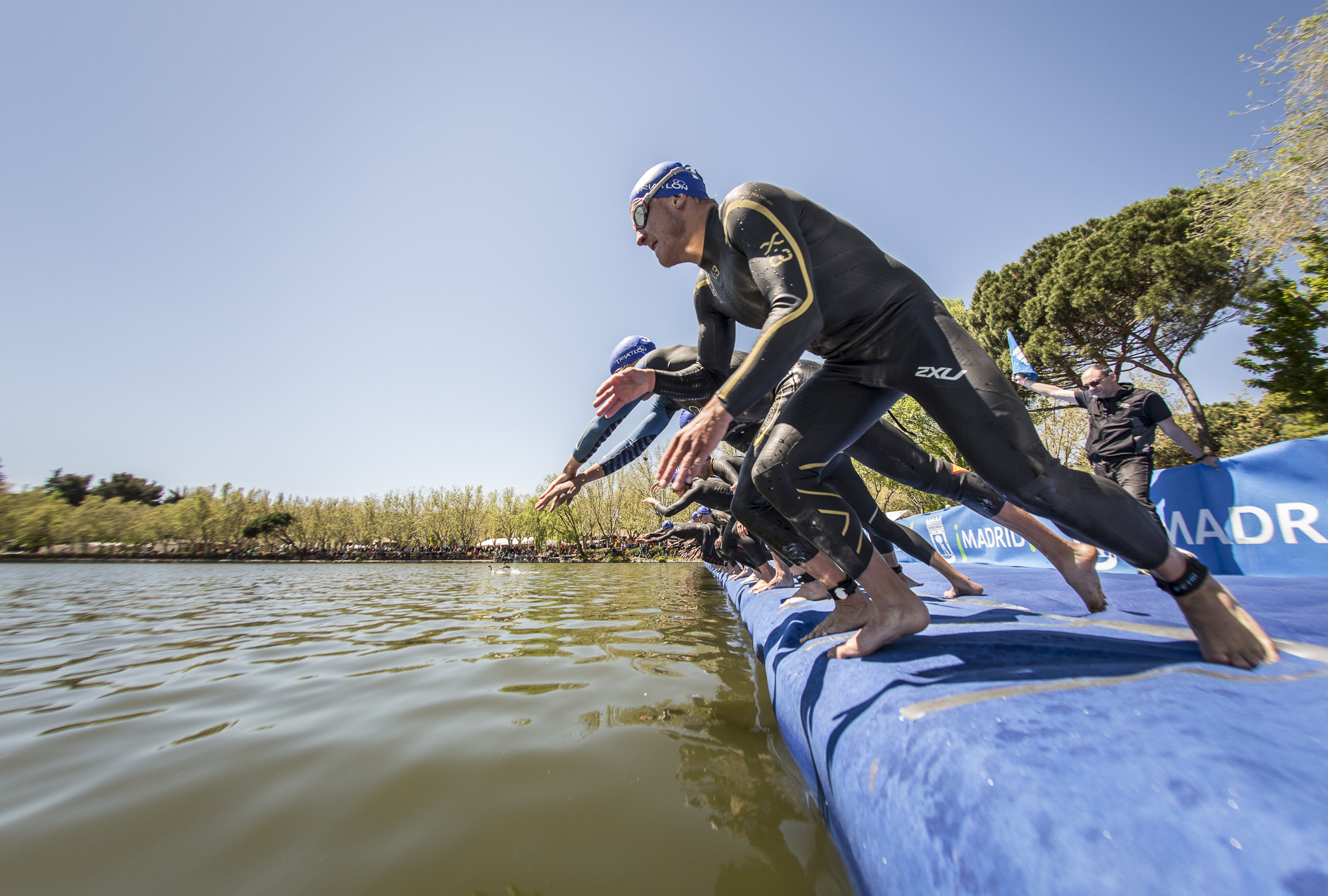
74 men lined up. The pontoon shook as they launched into the water and then it was two laps, with the strong swimmers hoping and praying that they could create a big enough gap to isolate the powerhouse from Norway who had the Alanya World Cup silver under his belt and that was one a flat bike course that did not really give him any advantage over the other athletes.

As the swim finished it was the German, Jonas Breinlinger who led them into T1 and it was he who set the initial pace on the bike. Close on his heels was Spain’s Kevin Tarek Viñuela who swam well but who would be unlikely at the moment to pose a threat once the run was underway. As a cyclist though he could do some good hard work in the pack and so it was a valuable addition to the seven or so athletes who started to chase Breinlinger.
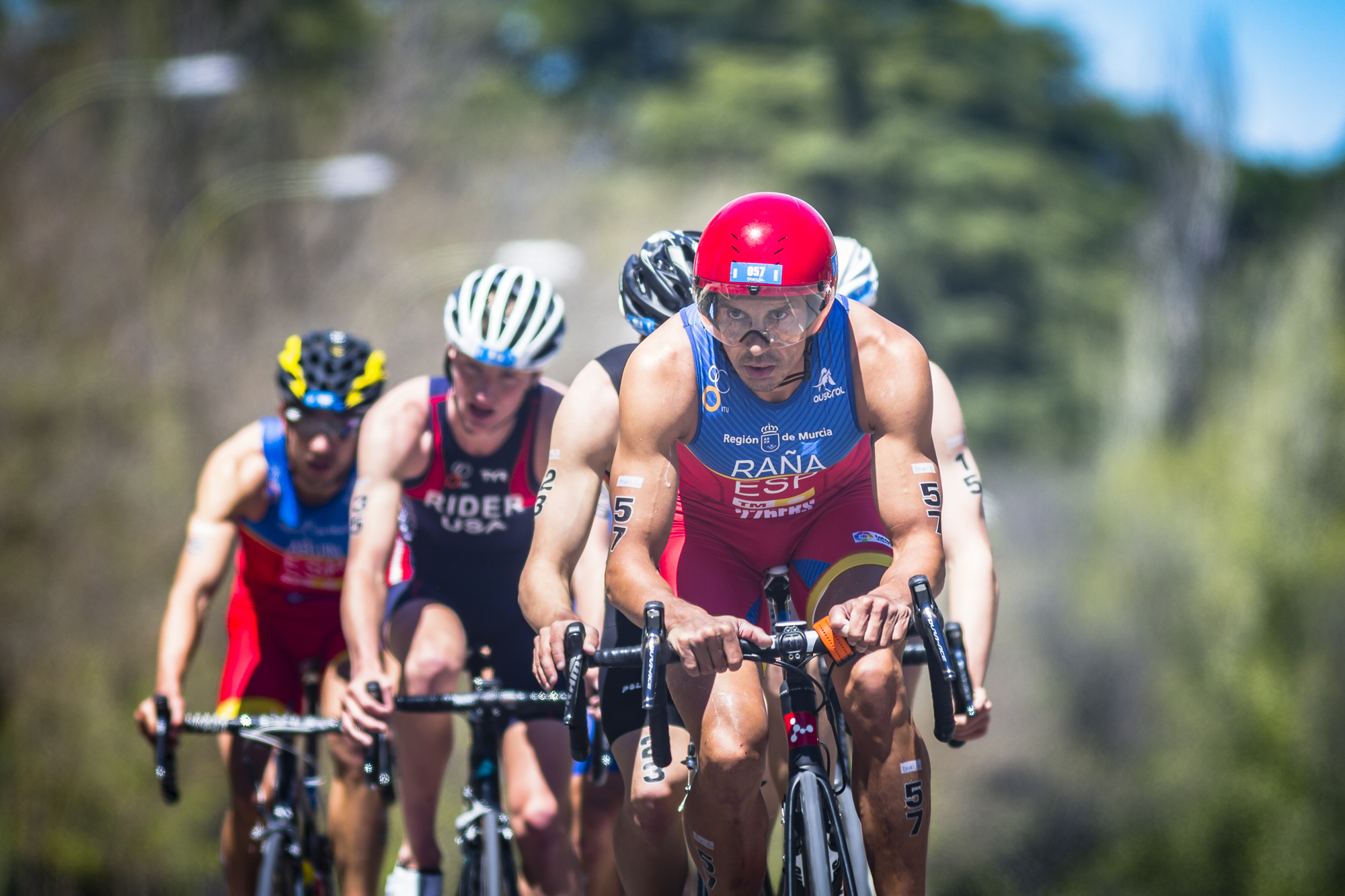
Five athletes bunched together as they left the water. Local support was strongest for Uxío Abuín Ares who led this small chase group. Seth Rider USA was part of that group and his Garmin data shows us just what levels of exertion go into a simple ETU 40.9k bike ride. It is good to see this young athlete race in Europe. We last saw him in Holten in that super-heated event of 2015 when he raced as a junior. Many years ahead of him. We look forwards to seeing him on the start lists at more ETU races. Ever so slightly off this swim pace was race favourite, Kristian Blummenfelt.
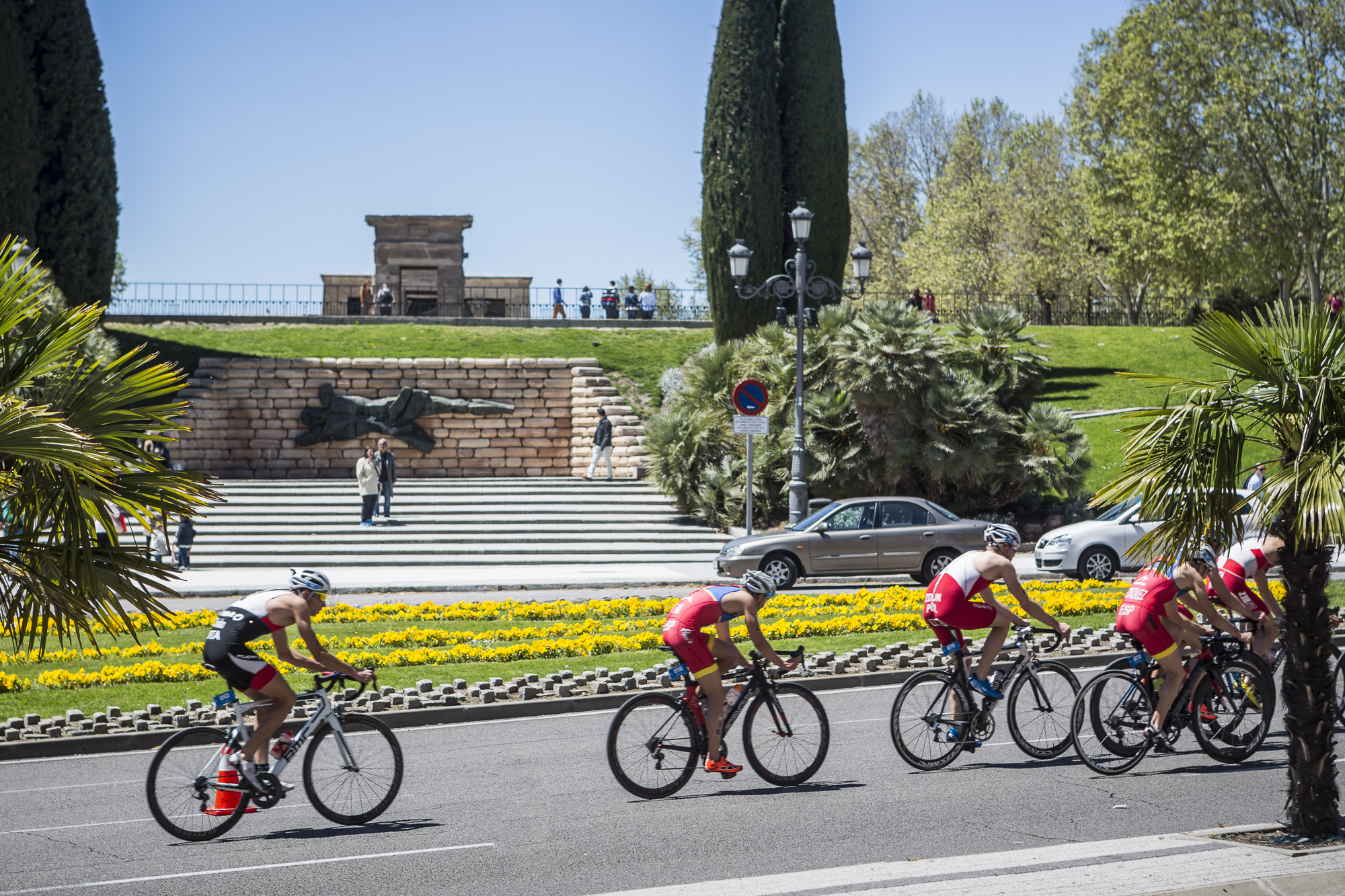
As the 3k link to the main laps of the bike was completed, it was Breinlinger who was still pushing the front and the remaining 7 sorting out what they would do.
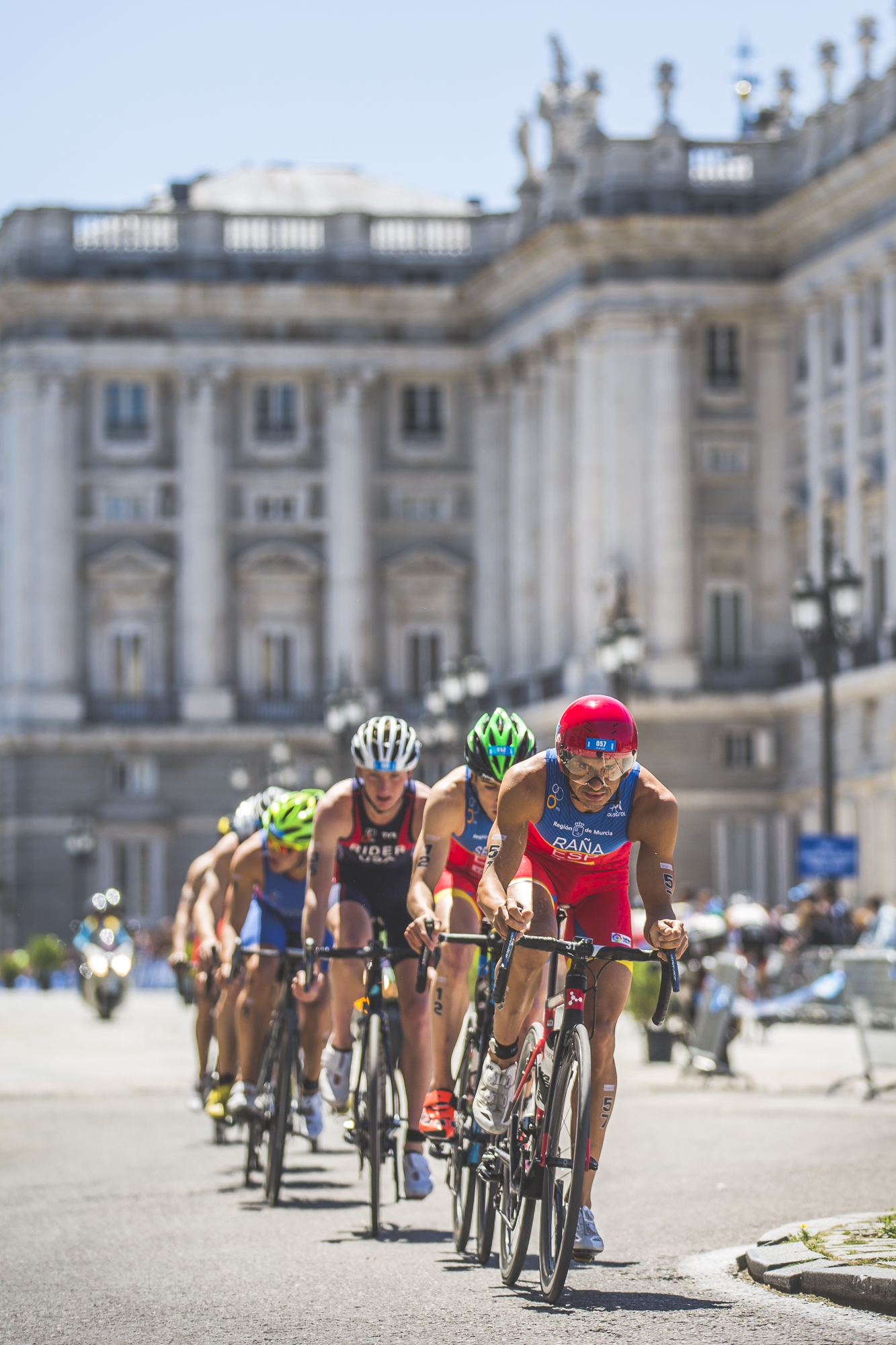
To the absolute delight of the crowds, the Spanish legend that is Ivan Raña was tucked into the group and working well. He won silver here in 2006 and gold back in 2002 and there are still some folk who can remember the amazing race between him and Filip Ospalý in Karlovy Vary in 2001 when he had led the bike and run for so much of the race, only to be struck down by cramps on the amazingly tough course. He was back. He was wearing number 57 but here he was, in the lead pack and on home ground.
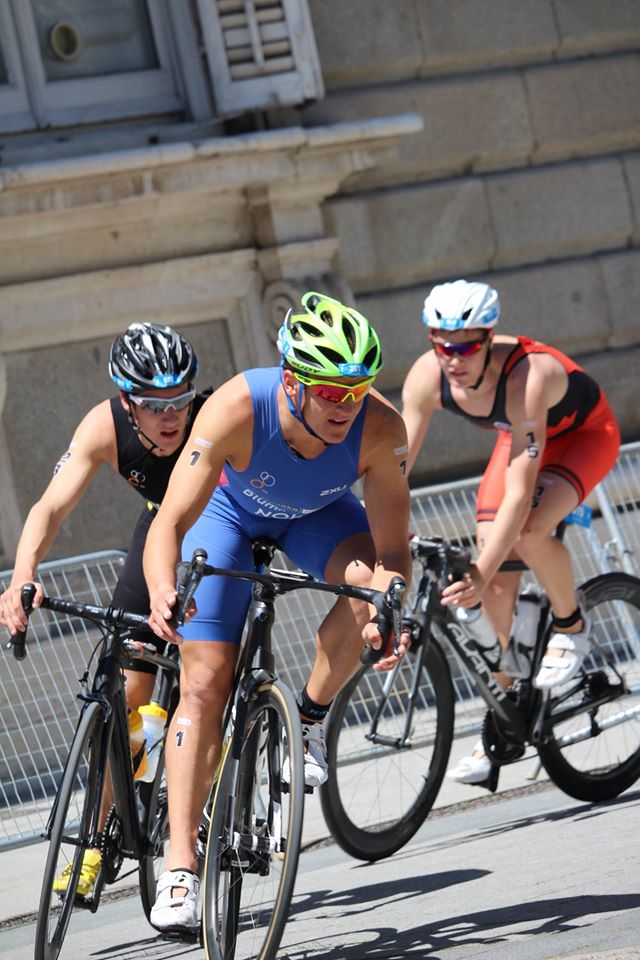
Canada’s Oliver Blecher was working well in the pack but he too had just joined the Elite ranks and would later DNF.
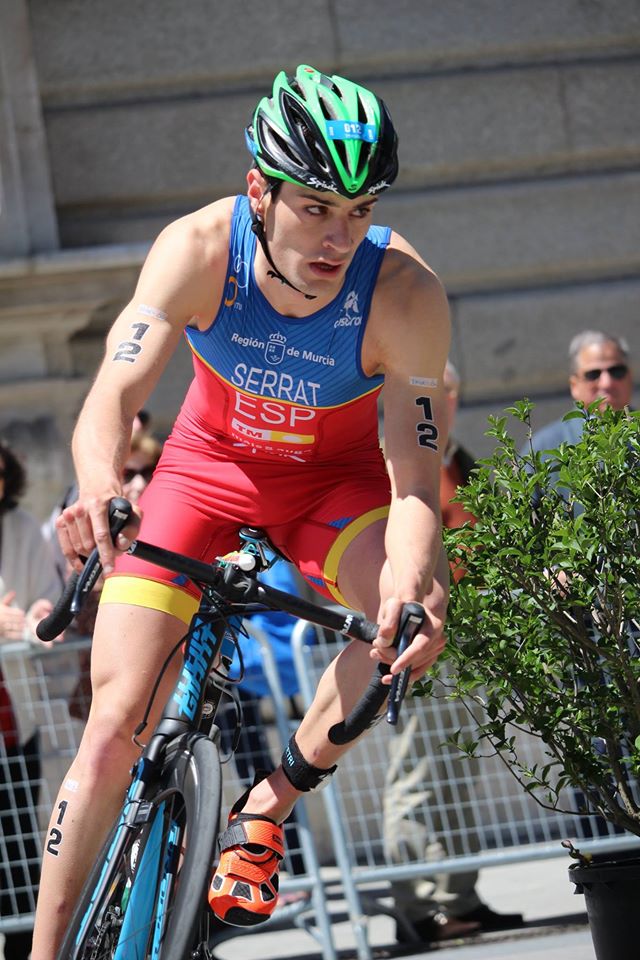
Spain’s Antonio Serrat Seoane, from Vigo showed promise as a junior too. He found himself in the chase group and would have to find someone to work with to have any chance of staying in touch with the fast-moving lead group.
With one lap complete, it was seven athletes working hard. Within them some really fast runners including the race favourite.

Back in the chase group and also from Norway was Gustav Iden. He had won the Holten Junior race last year and was here in Madrid having the ride of his life but they were still, as the second lap started, 25 seconds off the leaders.
Again and again Blummenfelt pushed the pace. Again and again the athletes went with him and took their turns at the front. Spectacular views in front of the Royal Palace.
It was the third lap that saw Serrat and Iden make their move. The two burst off the front of the chase pack and set off on their attempt to bridge the gap. They did this at a critical point and as they headed for the dead turn in front of the Royal Palace they could see exactly how much work they had to do, exactly how far behind they were and just how much of a break they had successfully made.
They had timed it right. They had a 15 second advantage over their chase group and were making ground on the leaders. Having successfully left their chase pack of 15, these two worked well to join the leaders. Behind them the chase pack lost some of its momentum as the leaders, crouching low over the bars on the descents and working high out of the saddles on the climbs, took advantage. Iden and Blummenfelt joined forces and the pace upped.
They held their lead and T2 was approaching. So – amongst these athletes, who would be out of T2 and running first? Who would get the advantage and who could make that advantage work?
As they sped onto the forecourt of the Royal Palace it was Blummenfelt who led, loosening his feet from the cycle shoes at the last moment just before the dead turn. Raña took a tighter line at the turn and had the edge as they came to the dismount line but Blummenfelt seemed to take an advantage to lead along the blue carpet.

Suddenly, from nowhere, it was Raña who sped out of T2. He had “done a Hauss” and had set off for the 10k run with no shoes. OK, so a Relay race of a shade over 1.6k is one thing. Now we were seeing a top-class athlete commit to a 10k run barefoot. The crowds were stunned. The crowds cheered. The crowds of spectators were amazed. Raña led the elite athletes out onto 10k of twisting and turning pavement and asphalt in downtown Madrid. We know that several athletes had punctured out on the bike. The risks of running in a city centre are too horrible to think about but here was the master and he was leading the race. The cameramen were almost falling over trying to get “the shot”. The commentators, both on the ground and on the live TV were left stunned.
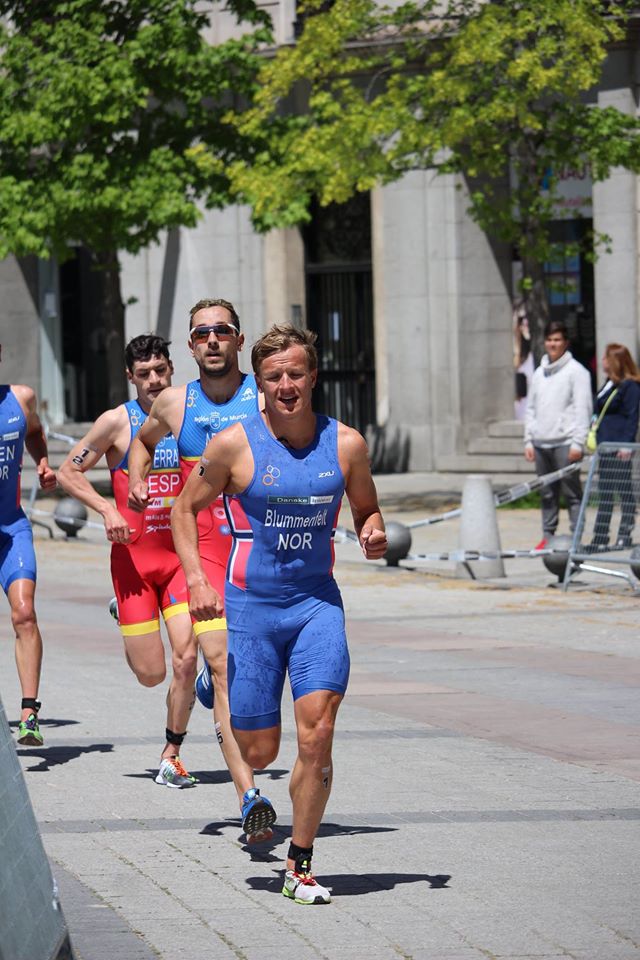
Blummenfelt set off after the Spaniard.
About 20 seconds back the chase pack of about a dozen entered T2 but they had little or no chance of catching those who would take gold, silver and bronze. As they left T2 they could see Raña heading towards them being chased by a group of athletes who could hardly believe their eyes. Raña was holding his lead … but for how long?
Behind him Serrat led the chase with Blummenfelt and Abuín on his shoulder. They had daylight between them.
The pace was strong and the roads were unforgiving.
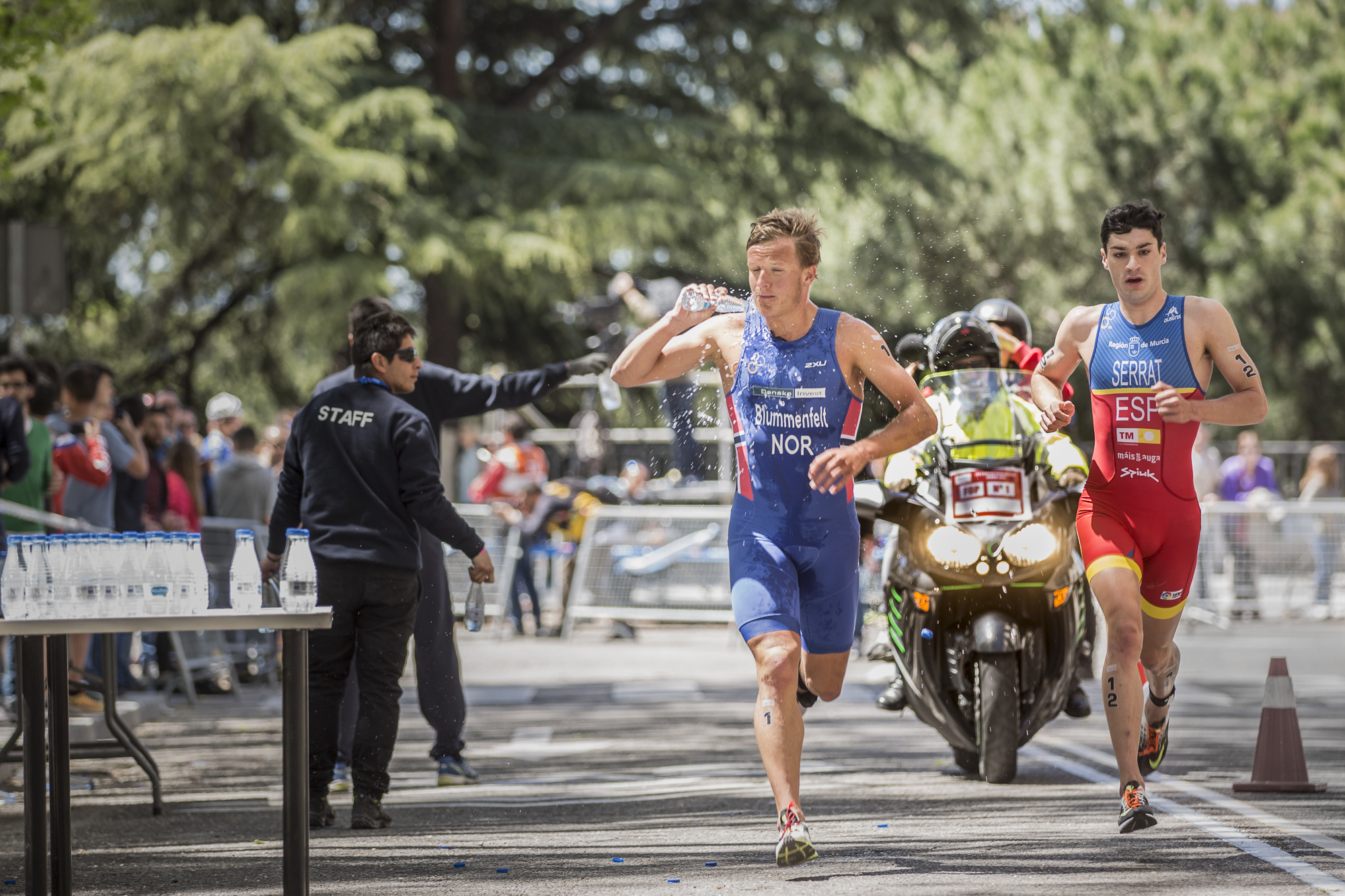
Slowly Blummenfelt upped the pace and moved up to and beyond Raña. Serrat stayed with the Norwegian and Abuín had the edge on the Spanish legend. The four held their lead. The spectators were going wild with their support. The Norwegian was isolated amongst the Spanish athletes.
Then came the kick. It was before the end of the first run lap and it took Serrat and Blummenfelt away from the two remaining Spaniards. Raña saw Abuín pull away but we know from the many years of racing that he is a tough, really tough athlete.
With the advantage they had off the bike, Breinlinger and Iden were not going to give up and they joined Raña.
Blummenfelt looked light on his feet as they came to finish the first lap. Breinlinger led the chase.
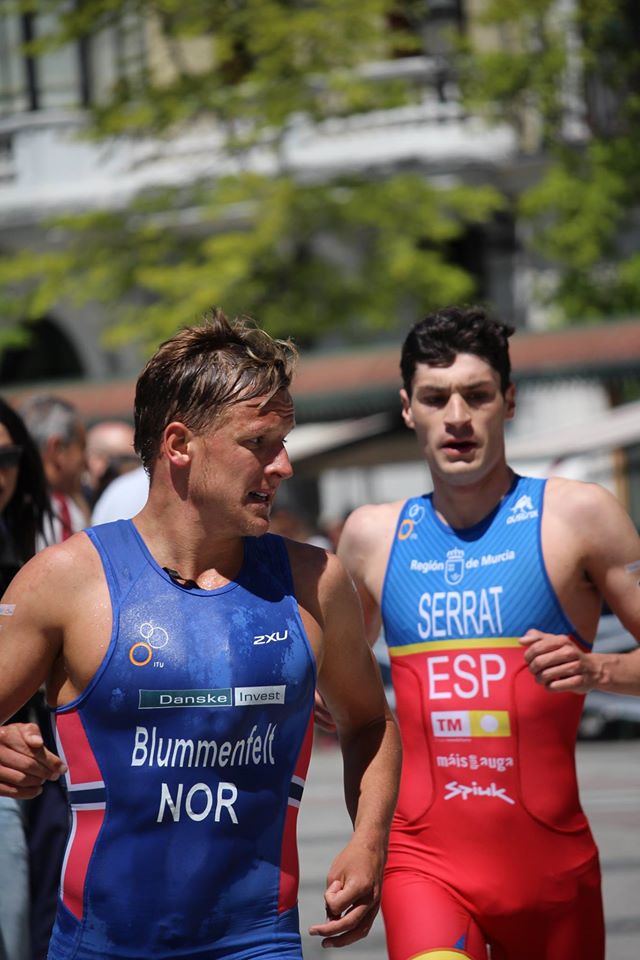
It was the third lap that saw Blummenfelt break Serrat. A few strides at first but then the lead increased as he kept up the pressure. Behind them the German had lost his advantage at the front of the pack and the 2015 ETU Ranking Series winner, Abuín was pulling away. Iden too was working hard and making ground. Raña, perhaps paying the price for running barefoot, had dropped back but was still delivering a clear message to all the younger athletes.
By now Blummenfelt was lapping slower runners on this 4-lap 2.5km course but Serrat was keeping him in view. Abuín and Iden were pace for pace. The home crowds obviously supporting the Spaniard but would this work against him and inspire the young Norwegian to try and join the race leader on the podium?
It was a full 90 seconds before the finish that Blummenfelt started to celebrate. Hands raised to the crowds, hi-fives. He knew he had it in the bag.
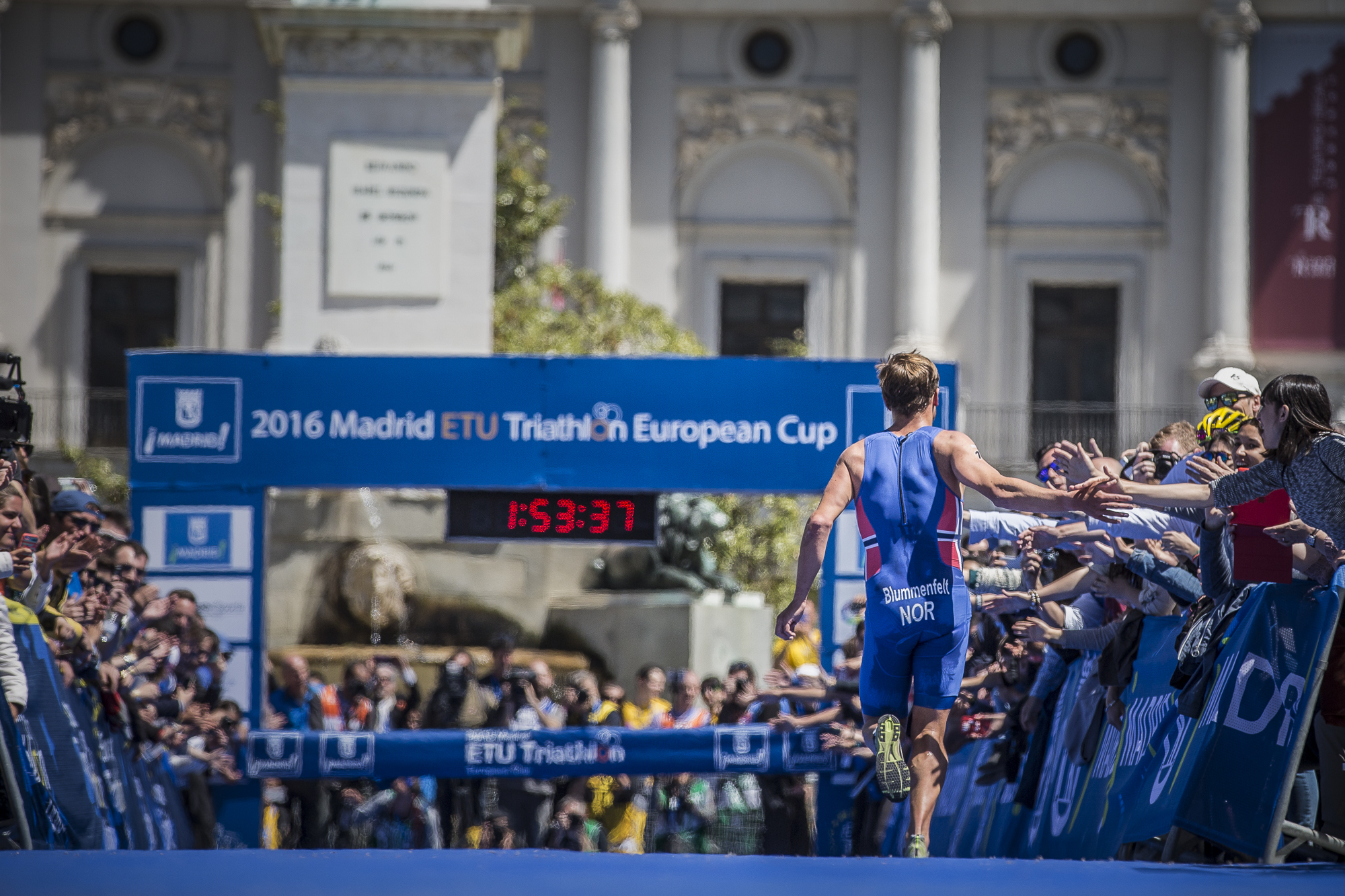
As he took the sharp right hand turn into the finish, with the Royal Palace behind him, that carpet leading to the finish tape must have been the best thing on Earth.
The crowds recognised a great talent.
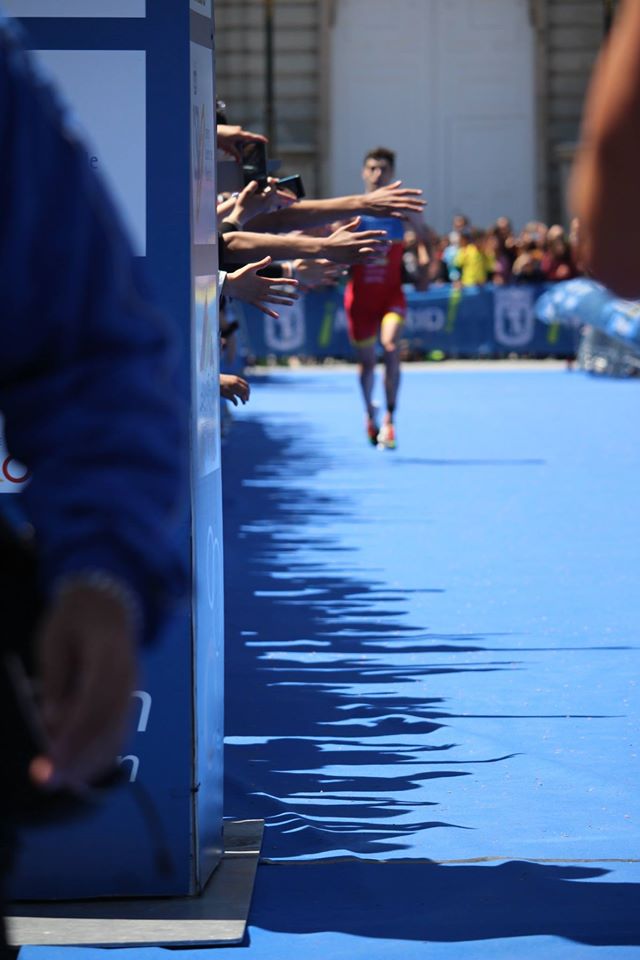
They crowds also wanted to see a Spaniard on the podium and they were rewarded with a solid silver from Serrat and then Abuín with the bronze.
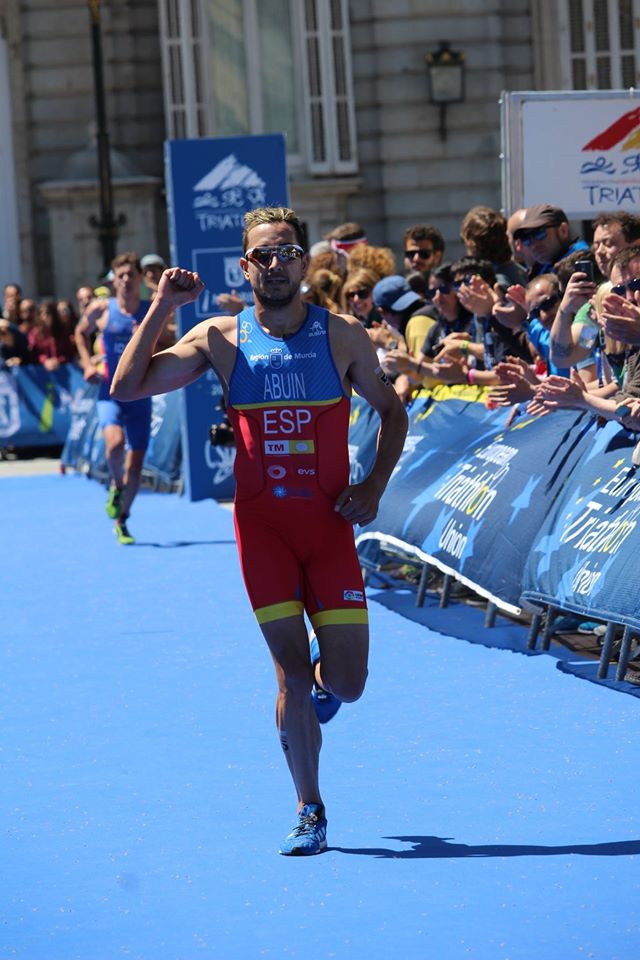
Fellow Norwegian Iden could not quite get that last kick to claim a place on the podium. Breinlinger eased up for fifth and then it was the turn of the spectators to welcome onto the finish line the legend Ivan Raña. Born in 1979 and still showing them how to race. He took his time on the last few metres of blue carpet. The crowds loved every step.
This was truly a race to remember and a race that we definitely want to see in 2017.
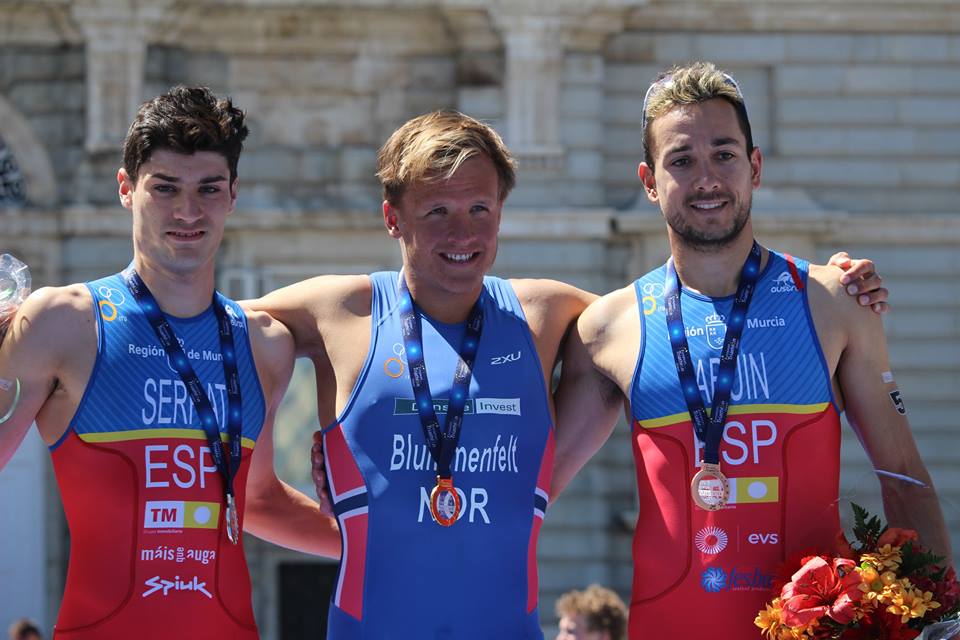
Blummenfelt was happy after the race, “The cycling and run was good. I caught the first group in T1 and then the bike and the run was good. I think the others suffered a bit more on the bike and so I was able to leave them on the run. Madrid – super nice. I’d like to come back, especially with this new course. It’s super nice!”
Serrat, “I’m suffering a lot so silver is great. I am very happy with how it went. The swim was good. I wanted to fight to get to the first place but could not. I was not in the lead group on the swim but on the second section, on the bike, I was able to reach them and then we had a group of I think 10. I knew the Norwegian was a strong guy and that he raced the World Cups and so I tried to keep up with him. It was very difficult. I so wanted to get the gold but it was impossible, he was so, so strong. I know Casa de Campo is difficult and that to race here on a Sunday in Madrid – the atmosphere was great. Fantastic views. I love racing here. There was such big support when the spectators see us wearing our Spanish national uniforms. They really supported us well.”
Abuín, “Of course I wanted to win once more. I was fighting right up to the very end. When I came off the bike I noticed a muscle tightening on my leg. I tried to run at the high pace of the others. My spirits were high all around the course and that is down to the great supporters around the course.”
With the microphone now turned to Raña, it was a chance for the public to listen to the great Spanish athlete who had run the 10k barefoot and who had still placed comfortably in the top ten with a mightily impressive 6th. “On the bike I did not go so hard because I had broken a spoke and on the last part of the bike I was not having a good time at all. It caught on the brakes. On the run I was pretty good. I came out of the water and it was going pretty well and I think that because of the problem on the bike so when I started the run I thought I wasn’t relaxed. My T2 was only 8 seconds. I thought, ‘why not? Less weight.’ And I ran more comfortably. I got used to running like this. The idea was to create a massive surprise. Not only for the spectators but also on the other athletes. This city. It is incredible. The Theatre, the Royal Palace. I think that the level of sport in Madrid has, by this one race alone, been raised. It is good to show this sport here as there are more people who want to see triathlon, to race triathlon and this is how you can show the world how everyone is involved; the timing guys, the officials, the LOC and how it all works. This is the best way to make our sport popular.”
The men’s race, in raw TV can be seen here.
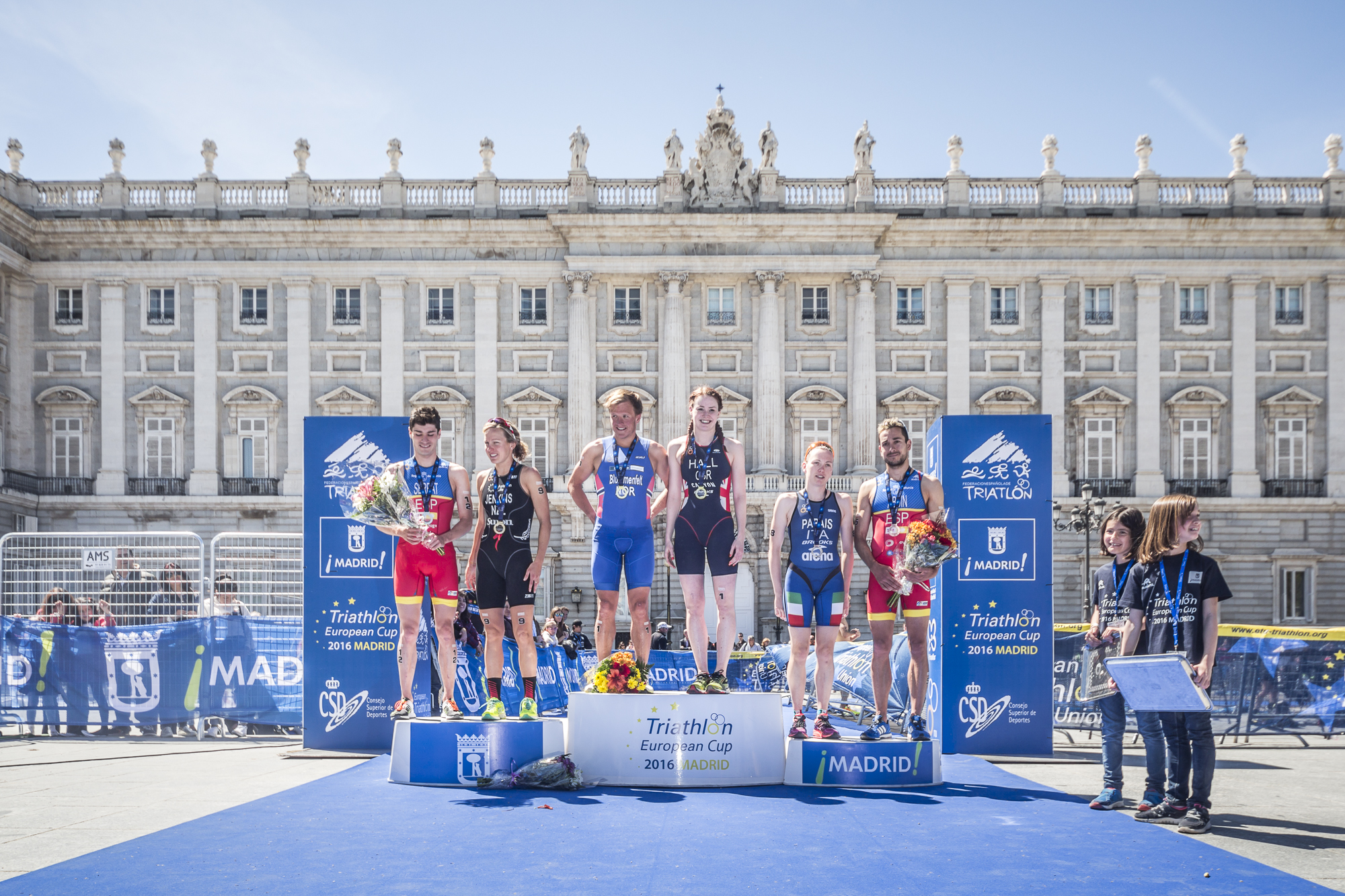
After the race the athletes were full of praise for this new course. Not as hilly as before but with sharp climbs, twists and turns, it is in their minds a great improvement and a truly exciting course to race and to watch. Madrid as a race has changed. That change has been for the good and this event is now one that will be remembered by many. Well done to the Federación Española de Triatlón. It will be an event that will have a huge waiting list for 2017.
If you want to see the raw TV coverage, then click this link, sit back and enjoy.
Article gallery
Related Event: 2016 Madrid ETU Triathlon European Cup
| Results: Elite Men | |||
|---|---|---|---|
| 1. | Kristian Blummenfelt | NOR | 01:53:50 |
| 2. | Antonio Serrat Seoane | ESP | 01:54:23 |
| 3. | Uxio Abuin Ares | ESP | 01:54:54 |
| 4. | Gustav Iden | NOR | 01:54:56 |
| 5. | Jonas Breinlinger | GER | 01:55:04 |
| 6. | Ivan Raña Fuentes | ESP | 01:55:36 |
| 7. | Lasse Lührs | GER | 01:55:47 |
| 8. | Grant Sheldon | GBR | 01:56:04 |
| 9. | Etienne Diemunsch | FRA | 01:56:15 |
| 10. | Tommaso Crivellaro | ITA | 01:56:24 |
| Results: Elite Women | |||
|---|---|---|---|
| 1. | Lucy Buckingham | GBR | 02:09:45 |
| 2. | Anneke Jenkins | NZL | 02:12:09 |
| 3. | Sara Papais | ITA | 02:12:38 |
| 4. | Marlene Gomez-Göggel | GER | 02:12:59 |
| 5. | Michelle Flipo | MEX | 02:13:08 |
| 6. | Paulina Kotfica | POL | 02:13:43 |
| 7. | Anna Godoy Contreras | ESP | 02:14:20 |
| 8. | Zoe Thomas | GBR | 02:14:25 |
| 9. | Lisa Berger | SUI | 02:14:33 |
| 10. | Alissa Konig | SUI | 02:14:51 |


